The Airstream Trade Wind™ is a modern answer to a timeless desire. With its state-of-the-art battery system, extensive solar capability and water-saving features, Trade Wind allows you to extend your horizons, go further afield, and stay there longer.
While this stunning travel trailer owes much to innovative technology, it’s also the product of Airstream’s oldest design strategy: Listening.
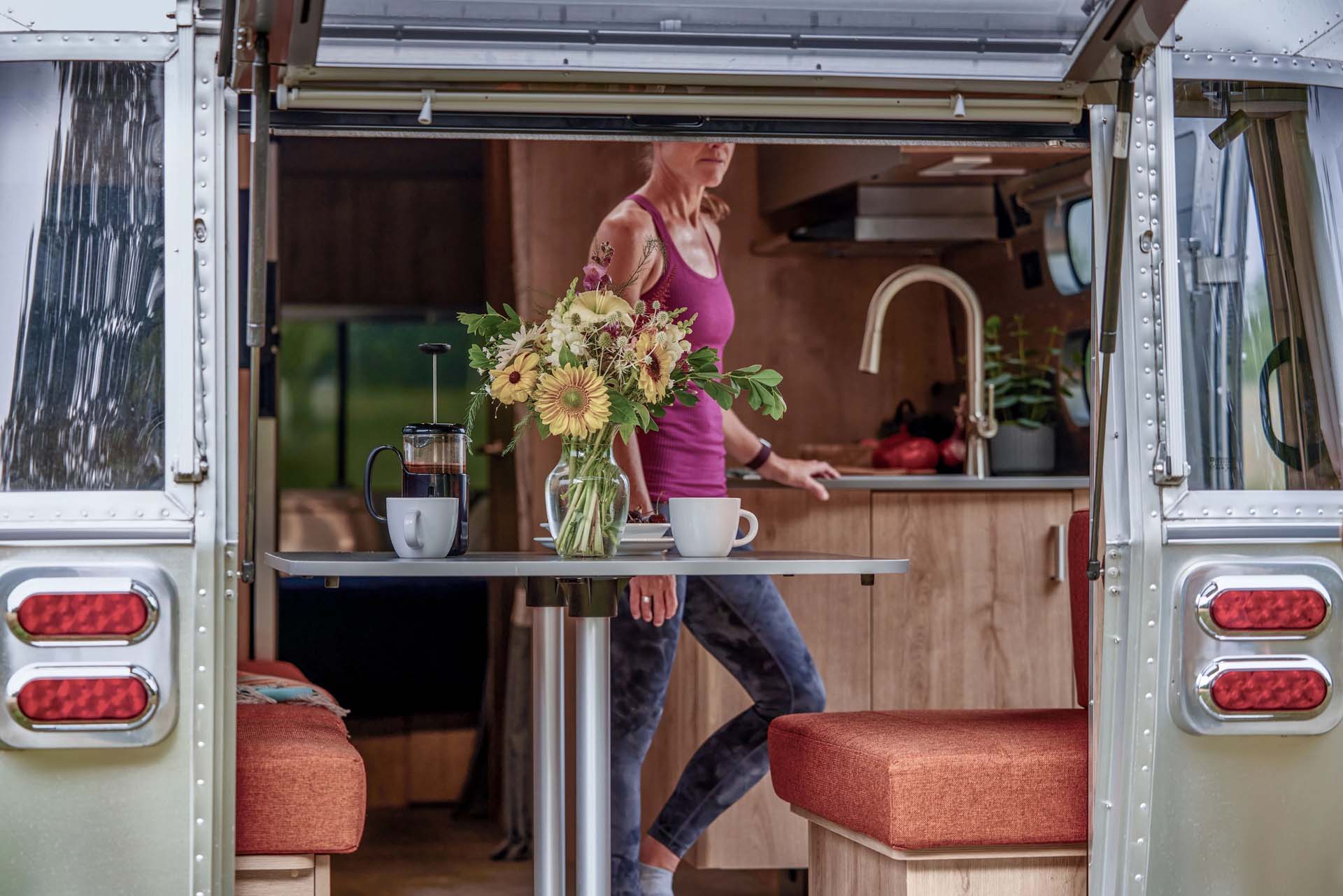
Listening, Learning, Responding
Never content to sit on its laurels and iconic status, Airstream constantly works to identify the emerging wants and needs of the Airstream community—current owners (Streamers) and potential buyers (Dreamers)—and create products that meet those needs. That effort involves everything from the marketing department’s sophisticated research efforts to monitoring comments in online forums to conversations with dealers and one-on-one chats with community members at Airstream events, like Airstream Club International rallies and the annual Alumapalooza event at the company’s headquarters in Jackson Center, Ohio.
“We spent a lot of time at Alumapalooza asking people what they wanted in an Airstream, and the answer was the freedom to go more places with the comforts of home,” says Airstream Manager of Electrical Engineering Jasen Gentis. “People expressed a desire to go beyond hook-up campsites and explore camping in places like National Forests and BLM land. There was also a lot of interest in the eStream, Airstream’s concept all-electric travel trailer.”
Everything Jasen and his team heard at Alumapalooza was supported by other input and research about the growing passion for boondocking among Airstreamers.
Based on this insight, Airstream, led by its engineering and design teams, set about creating a travel trailer capable of meeting the wants and needs of this growing segment of the recreational vehicle community. The goal was to create something at once familiar and new: A travel trailer that reflects the go-further-stay-longer ethos in every aspect of its design and engineering. Remarkably, the company met that objective in just nine months.
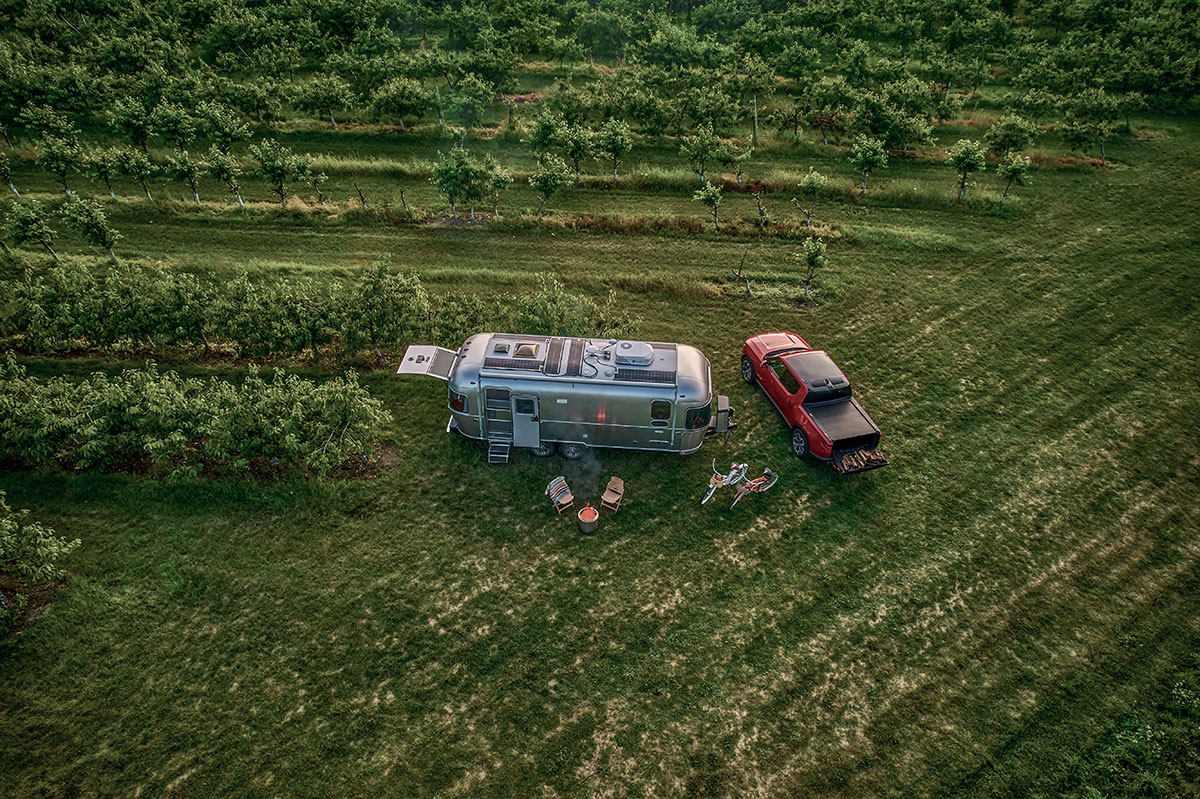
The project unfolded in multiple phases marked by ongoing conversations, collaborative decision-making and milestone meetings among Airstream’s executive leadership and its engineering, design, sales, service, purchasing and marketing departments.
As in every Airstream design process, the first step was to set priorities.
“We sorted through all the input to decide what features were must-haves and which were nice-to-haves,” says Airstream Director of Engineering Karla Paul. “The top priority for Trade Wind was pretty clear: more power to give our owners more freedom to travel almost anywhere with the comforts of home.”
That decision would drive many Trade Wind design decisions.
Delivering the Power to Explore
Providing self-contained power was obviously central to the mission of creating the perfect Airstream for off-grid adventure. So, it’s no surprise that the Trade Wind’s electrical system is the humming heart of this rugged, versatile travel trailer. Its three chassis-integrated lithium batteries deliver a total of 810 Amp-hours of electricity—four to eight times the considerable amount of power available in other Airstream models. Those batteries can be charged using Trade Wind’s 600 Watts of rooftop solar generating capacity; the most Airstream has ever offered.
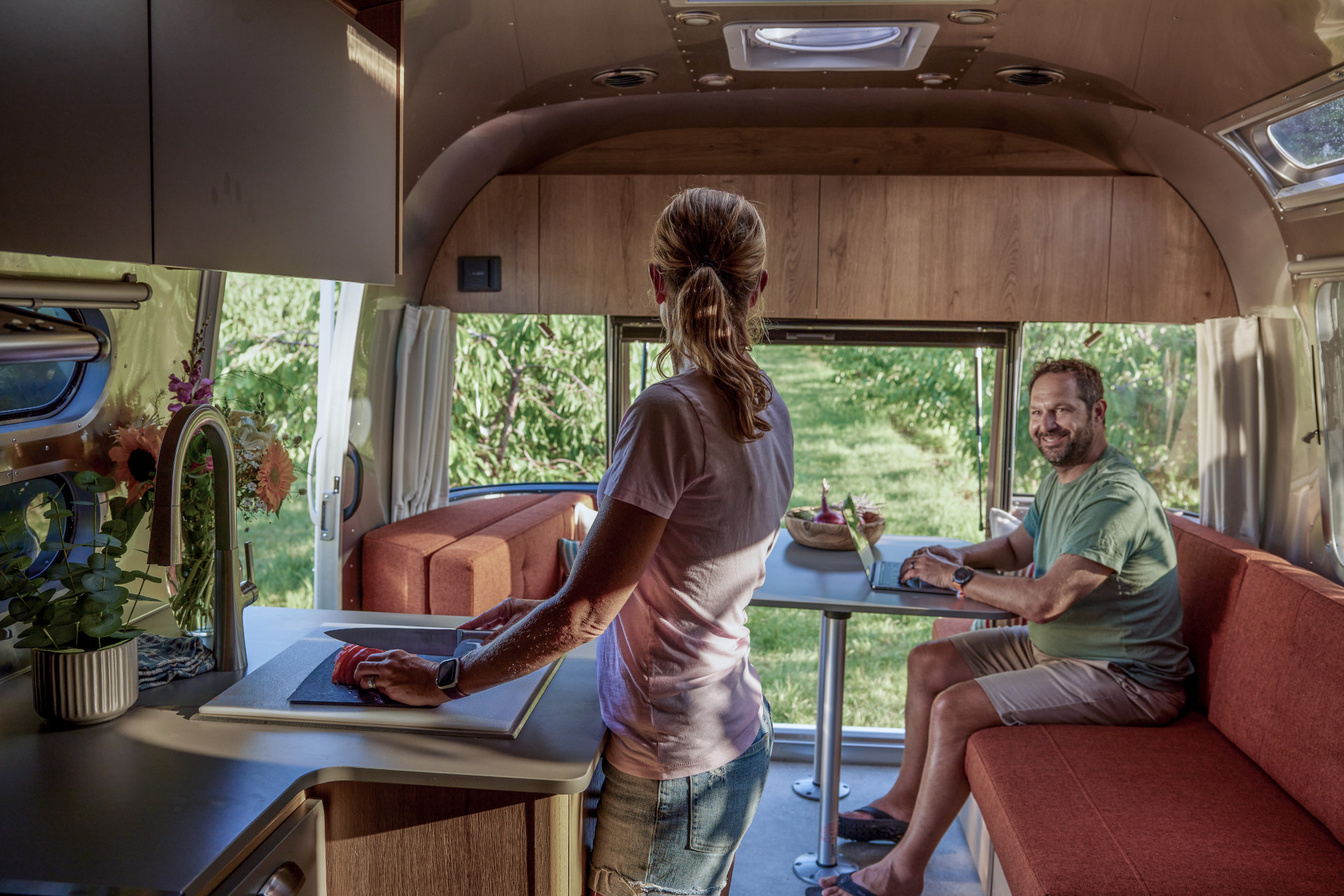
That battery pack delivers enough power to run the refrigerator, water pump, TV, lights, and, yes, even the air conditioning and microwave when you are far from shore power. And because keeping devices charged and powering your modern life are modern necessities, a 3000-watt-capacity inverter provides access to electricity at any of Trade Wind’s multiple interior and exterior inverted electrical outlets.
Challenges Result in Benefits
You could say the Trade Wind is built around that impressive battery pack. The batteries’ considerable heft influenced decisions regarding weight distribution, including the location of appliances. Trade Wind’s 25-foot length is also the result of power considerations as that length provides the maximum interior space that can be served by one air conditioning unit. Added gear space, a nice-to-have for boondocking, was deleted from early designs to keep the Trade Wind at its target weight. The engineering team worked closely with Airstream’s interior designers on the placement of the outlets, all of which are inverted, to ensure that the unit’s extensive wiring system didn’t impinge on other features.
The engineers added a recirculating hot water heater to extend Trade Wind's water supply. This system quickly delivers hot water to the galley and bathroom, thus reducing the amount of wastewater dumped into the gray tank while preparing to wash dishes or shower. A 110-volt outlet near Trade Wind’s water intake allows owners to use their own electric water purification systems to ensure clean, potable water wherever they travel.
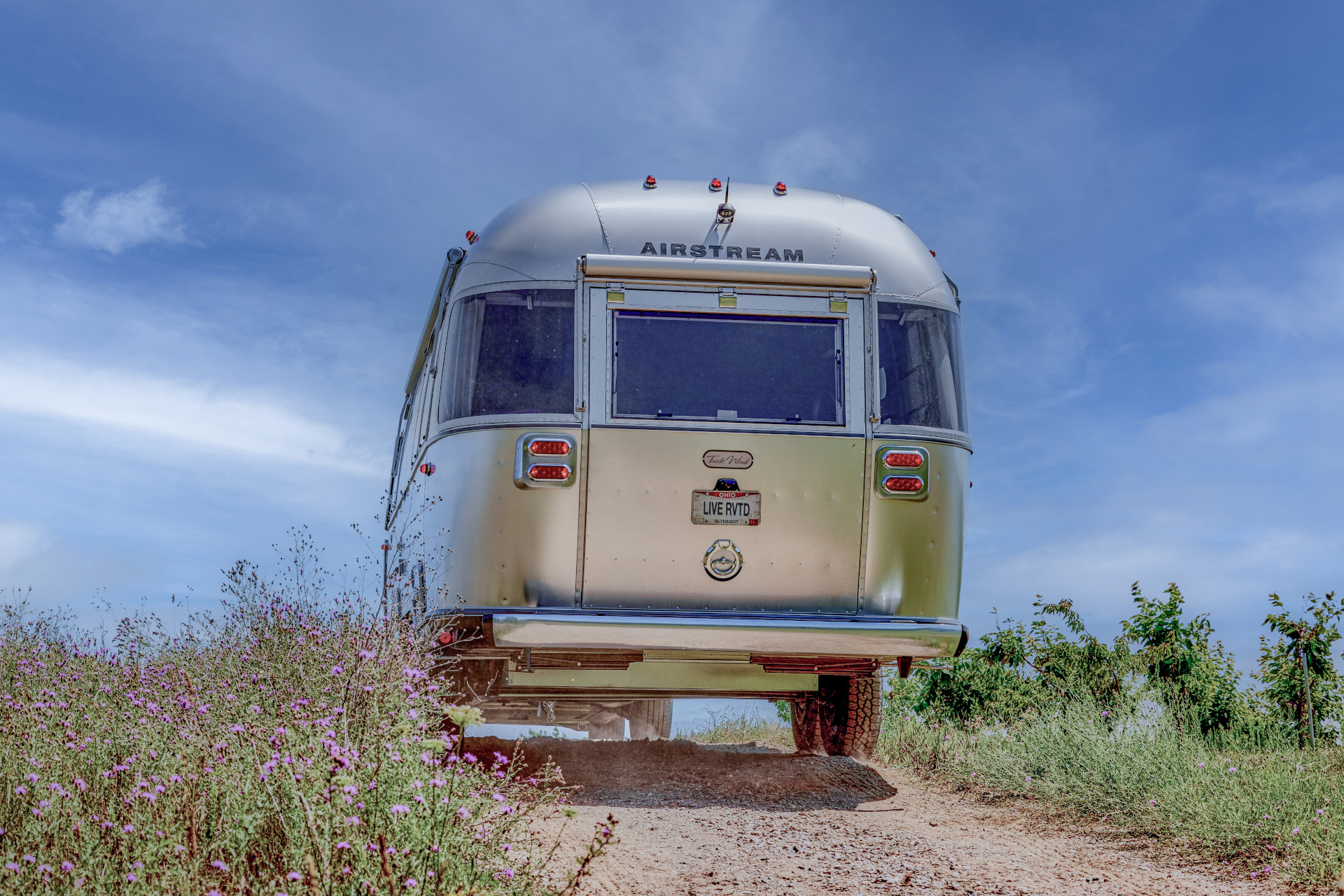
To help get this modern marvel wherever its owner wants to go, the engineering team designed Trade Wind with three inches of added ground clearance and tires built to handle rough terrain. Stainless steel rock guards and solar window protection keep debris thrown up by your tow vehicle at bay. Trade Wind’s optional rear cargo hatch allows for the easy loading of adventure gear and lets you enjoy more breezes and views.
From Design to Production
The Trade Wind design began life as a group of Computer-Aided Design (CAD) drawings – essentially digital blueprints. The CAD system provides a sandbox for engineers to quickly try out and “see” various design elements and layouts.
As the CAD process progressed, Airstream electrical engineers began building and testing key elements of the all-important power system. Once a CAD-generated design was agreed upon and approved, the engineers and designers began building a series of models of the Trade Wind. The first was a scaled-down mock-up of the travel trailer to help bring the concept to life. Next came a limited full-size prototype Trade Wind used to assess the performance of the design’s systems, which was assembled and tested in separate buildings from Airstream’s expansive travel trailer production facility to keep its features confidential. Finally, the team built a full-sized “line pilot” Trade Wind on the main production line that incorporated everything they learned in the design process and featured one of the two decors created by Airstream’s interior design team.
Like all Airstream products, the Trade Wind underwent rigorous testing before going into production. Components and functions, including the solar power and inverter systems, were tested repeatedly during the design process. The completed trailer was subjected to extensive road testing at a test track in the Midwest.
Creating an Interior that Supports Outdoor Adventure
Airstream's Interiors team works hand-in-glove with the engineering, marketing, and sales departments to enhance existing Airstream products and develop new ones. The team’s resume includes such collaborative projects as the Tommy Bahama Touring Coaches, the REI Co-op Special Edition Basecamp, and the Pottery Barn Special Edition Travel Trailer. You can also see their handiwork in two award-winning projects: the Flying Cloud 30FB Office and the 2022 eStream Concept Travel Trailer.
“We strive to make improvements based on customer feedback,” says Airstream Interior Designer Jessica Fisher. “For example, we updated the aluminum blinds on our Bambi line to more modern roller shades after an Airstreamer we met at Alumapalooza provided feedback about some of the things she didn’t like about the aluminum blinds in her Sport.”
The design team’s objective when creating new products is to create a space that supports the new model’s intended use.
"We're involved with the engineering team from the start of every new product design,” says Jessica. “We typically start the process with an initial idea, premise, theme or target and build upon that for the entire design. We want to facilitate outdoor adventure while providing all the comforts, amenities, and luxuries of a high-end home.”
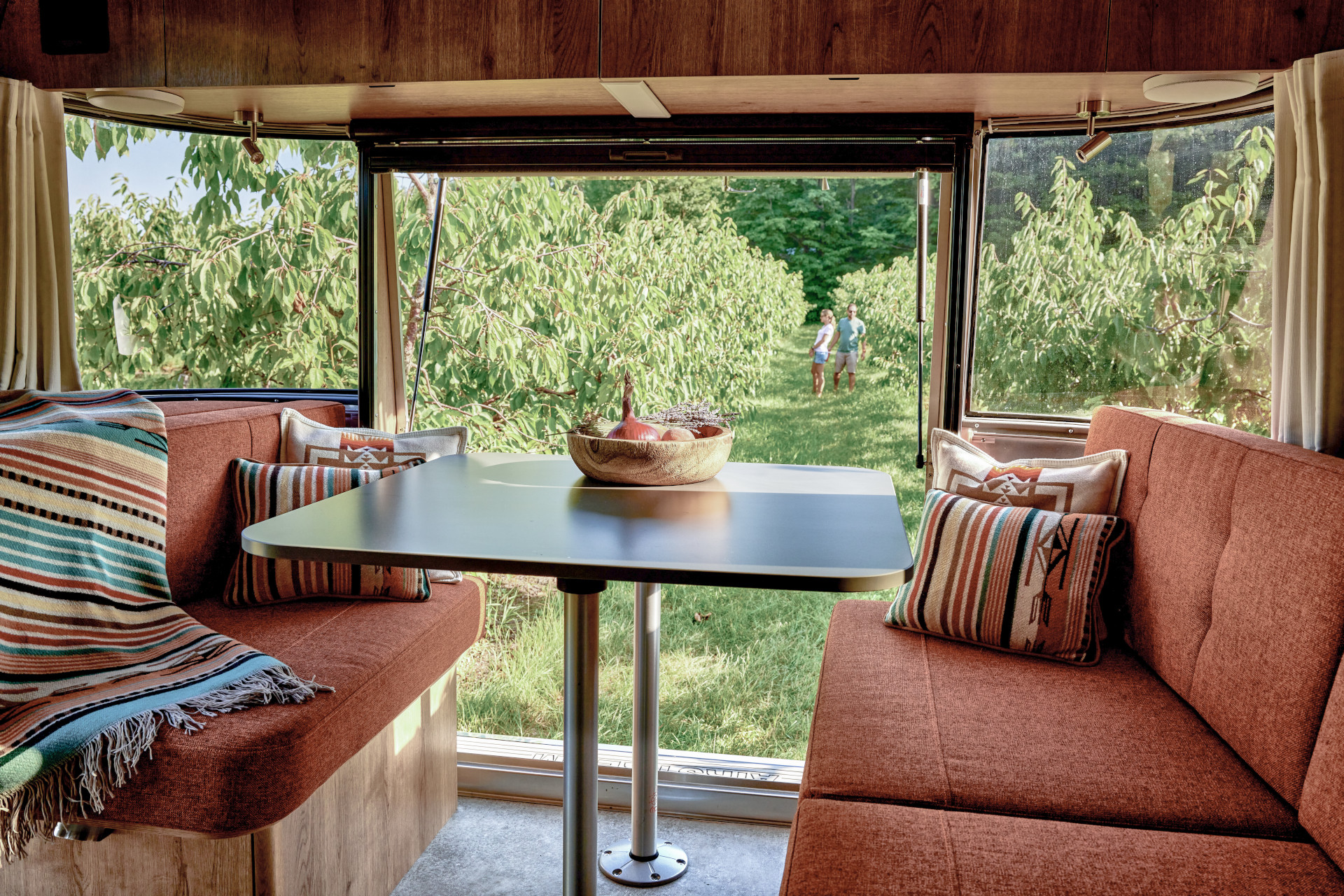
While some new Airstream models feature first-of-their-kind interior layouts, the engineering and marketing teams decided to use the proven (and popular) 25FB layout for the Trade Wind.
“The idea was to pack a ton of innovative technology into one of our most popular interiors to create an excellent off-grid travel trailer,” says Jasen.
Trade Wind’s interior advances that goal in both its fixtures and decor. Its showerhead conserves water use, positive latches keep drawers closed during bumpy rides, and adventure-friendly fabrics are easy to clean. The two available interior color palettes reflect the joy of outdoor exploration.
“The overall look is intended to evoke a cabin or lodge in our National Parks,” says Airstream Interior Designer Molly Nauman. “The visible wood grain, accented by the natural-feeling colors for the seating like Terracotta orange and Fieldstone gray, drives this idea.”
Nature references are also represented subtly with the asymmetrical accent surfaces of darker, gray-colored panels in the unit.
“This is most apparent in the galley,” Molly says, “where the forward pantry and bank of drawers beneath the galley sink are accentuated. We wanted to recall the idea of nature to instill the idea that this unit can be used to get deep into nature for extended periods.”
Want to learn more about what makes Trade Wind the perfect off-grid travel trailer? Download a Trade Wind brochure and learn more about the features of this transformational travel trailer.









